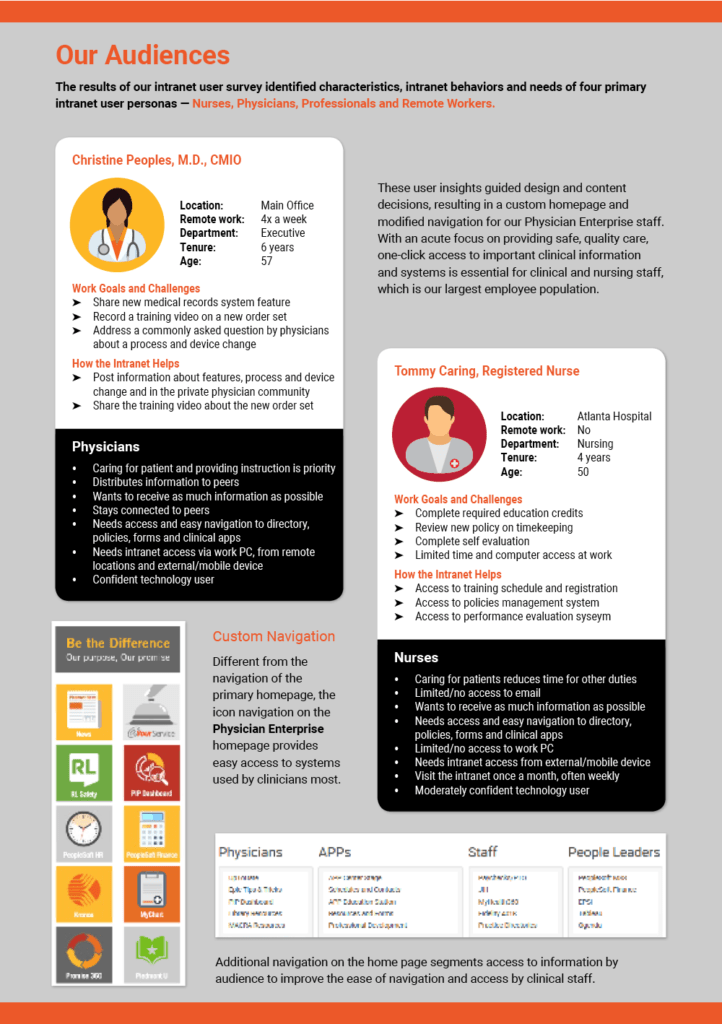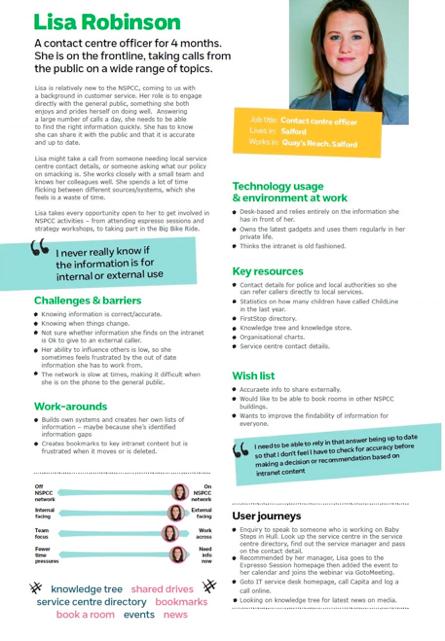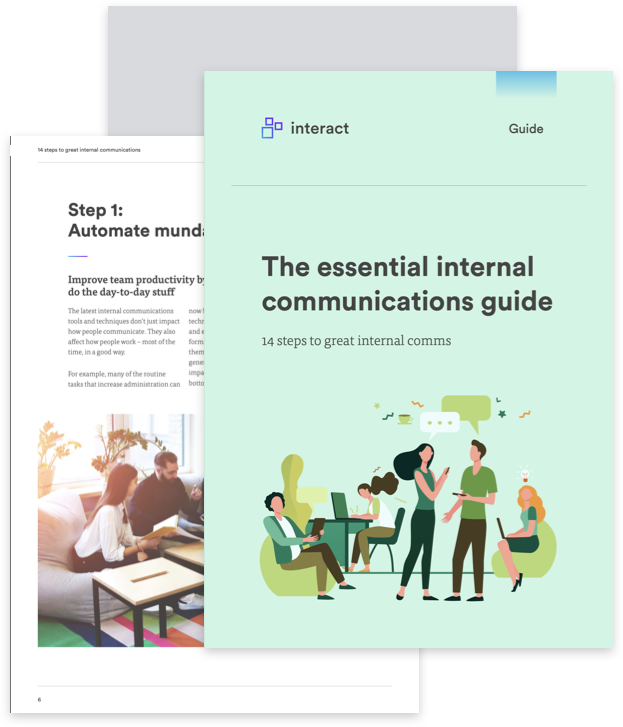If you’re working in internal communications, you’ll know how important it is to have an idea of who you’re talking to.
According to a survey by Clarizon, 81% of employers have said that their attempts to improve communication in order to boost productivity and keep projects on track had failed. When you’re trying to compete with Slack, Whatsapp, Sharepoint and a buzzing email inbox to deliver important information to your workers, how do you make sure you get heard?
Getting a message across to an entire workforce should be able to transcend age, culture, behavioral habits and hierarchy in order to be understood and engaged with.
With these differentials, the traditional method of dividing your company up by departments or office locations is ineffective. There is a need to make sure what you want to communicate gets the attention and involvement of the people in question.
So how do you do this successfully? One of the key methods is to create personas within your organization. Personas can help you effectively communicate with each age group, wherever they are in the organizational hierarchy.
The essential internal communications guide
What are personas?

Personas are a semi-fictional representation of the people you are attempting to connect with.
These snapshots allow you to develop a more sophisticated style of communication. With these personas, you can understand your user’s needs, behaviors and experience and create strategies which will help your audience respond better to your message.
Sales and marketing people have been using personas to tailor their message to a set of distinct personalities for years. Its success as a technique has helped it become popular with internal communication experts more recently, so there’s no reason why you can’t use these tactics to create a sales or marketing intranet using personas for these departments, or any department in your organization.
Personas address differentials within a company. The main differences in a workforce are:
Age – An older generation will use a digital workplace differently to a younger worker.
Location – a message about the kitchen in the London office will not be relevant to home workers or anyone who works in the depot or another office.
Role – Internal communications can be tricky if some of your workforce are customer-facing, working remotely or are non-wired.
There are many other variables which help form personas, which we’ll look at shortly. But even with these three factors, it’s clear that developing a system for successful communication across a diverse organization is key.
Why use personas?
The age of memos being emailed to all staff, or of notice in the break room being sufficient, is long gone. Every day we are bombarded by channels all peddling different messages trying to grab a few moments of our attention. Through pop-up notifications, social media and instant messages on laptops, tablets and phones, a company needs to cut through this noise with communication that will engage and resonate with their people.
The essential internal communications guide
This goal is even more challenging when the people in the organization are a mixture of different traits, behaviors and ages.
That’s why, when you’re developing internal communications strategies, it’s important to have an idea of the personas within your organization. Finding out what motivates people, what frustrates them and what their needs are allows you to deliver information, conversation and develop a culture that connects with your workforce. When you know who you’re targeting, you’re able to deliver a more empathic message, so personas also help deliver more effective communications.
Using this information, you’re also able to look at any software features or functionalities that can be used to support them. This, in turn, furthers the evolution of the business, with increased participation, engagement and contribution from more members.
Establishing the personas in your business allows you to create a conversation with your employees regardless of the countless differentiators. The employee-centered approach can stop workers being data on a screen and allow them to be seen as people.
How to create personas
The creation of your personas is based on a number of things – the role they are in, the challenges they face and their preferences. While personas are, to all extent and purposes, imaginary, they are based on reality and on the likes, dislikes, behaviors and motivations of your real-life work force.

(Interact customer, Piedmont Healthcare, created personas to identify the main target audiences for their new intranet project. Their strategic approach to identifying and satisfying user needs saw Piedmont secure recognition at the Intranet Excellence Awards. Discover more about their story in our Award-Winning Intranets guide.
There are a number of ways of grabbing information to create your personas. The data can come from the following sources:
Interviews – One-to-ones with individual members should unearth some valuable bits of information
Stakeholders – Involving stakeholders in the persona process gives them the opportunity to become engaged and more willing to adopt any new systems you are developing.
Focus groups – Have the groups come together to talk about their roles, challenges, frustrations and wish lists in their job
Surveys – Anonymous surveys can be very effective in working out what individuals are not saying out loud
Line managers – Their next-in-command will provide another view point.
This information from multiple sources should condense down to create no more than five or six separate personas, depending on the size of the company.
And as a business changes and evolves, it’s also important to revisit this process annually or biannually to keep abreast with developments.
What should a persona profile look like?

(UK children’s charity, the NSPCC, created archetypal personas based on information gathered from their staff. The persona helped identify the unique needs and attributes of their different employee groups, helping them to tailor communications accordingly.)
Constructing a persona should gather as much useful information to build up a good profile. Regardless of length, they will contain the core details:
- A name
- A short biography
- Their role
- A description of their personality
- A photograph
In order to get a better understanding, a list of their challenges and barriers that they face in their job should be included:
- The times they work
- Their average workload
- Their processes
- Any frustrations they experience
- Their roles and goals
- Traits
- Tasks
- Motivators
- Demographics
- Network
- Organizational Awareness
This information turns communication around. Instead of the traditional top-down structure informing workers what they think they should know, you can provide news and information that individual employees will find useful and meaningful in regard to the business as a whole. This will boost a staff member’s interaction with the organization.
The essential internal communications guide
How to adopt personas
Personas can be used in a variety of areas within HR and internal communications. These snap shots of your workforce can help you improve how you do your job and enhance the working lives of your organization.
But while you form a detailed strategy for creating personas, the same level attention is required to make sure that the people that need to use them, do use them.
In order for the creation of persona profiles to be useful, they need to not only be based on real-life data, they need to be adopted by everyone on the internal comms team. It’s a good idea to get everyone’s involvement right from the beginning, so they help form the profiles and have an understanding of the role that the personas will play.
Getting leadership buy-in is important. Without the support of the top level, most projects will struggle to reach fruition. But you also need engagement with the stakeholders. Involving both parties in the creation of the personas will allow them to be far more engaged when it comes to roll out.

Launching personas in internal communications
If the business has existed for many years without the use of personas, you may come across some of the following objections:
“They are just stereotypes!”
“They do not reflect our workforce!”
“What are we supposed to do with them?”
And as part of persona creation involves looking at staff pain points, some departments may also object to unearthing more problems within an organization.
Building personas creates a more improved business. Aside from allowing internal communications to engage and connect more effectively with its people, the gathering of this information is invaluable to streamlining processes, providing extra resources and working out better ways to improve job roles.
Once the personas have been created, it is fundamental that they are adopted. After their launch, they should no longer be printed handouts, but ingrained into the psyche of the internal comms department. They should be organic to processes and be regarded as one of the many techniques which create better communication across the company.
If you’re working on improving the effectiveness of your internal communications department through the use of personas, you might be interested in our blog that suggests ways of measuring the success of IC operations.


